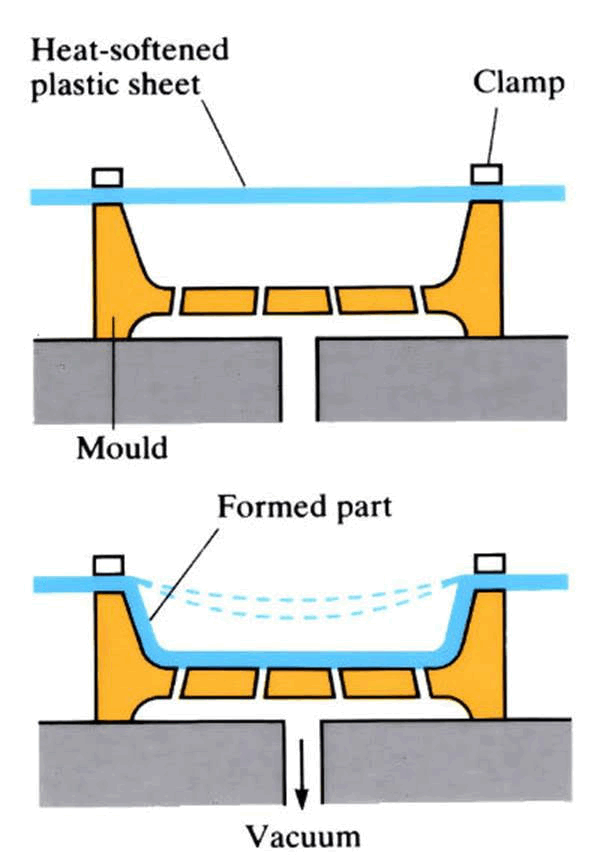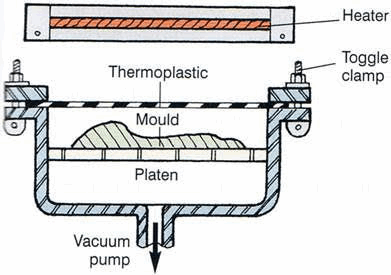ShapeMaster’s Vacuum Forming Process
The vacuum forming process is very simple. It uses a flat sheet of rigid plastic which once heated to a softened state is then drawn into or over a mold, often referred to as a tool. Once cooled back to the rigid state, it is removed from the mold and trimmed. This process is slower than injection molding however it offers quick-to-make molds or tooling so that you can go from an idea to a finished product in much less time than it takes to create molded parts with other processes such as injection molding and roto-molding.
A large amount of money and resources can be saved by making the molds, tools, or forms out of wood or similar low-cost tooling materials. By forming out a few parts and hand trimming you can complete a shaped part for examination and use in sales promotions or when contemplating a new product to bring to market.
While wood or soft materials that are low cost fairly quick to fabricate and inexpensive to purchase may be used for prototypes and short runs, we have found that in production a machined or cast aluminum tool will be required with added water cooling lines internal that help to dissipate the heat which is conducted into the tool when molding the part.
With soft tools, the heat is not dissipated and is instead retained internally. This builds up until the parts when ejected are still soft and not cooled to a rigid state. This requires longer times between cycles of forming and may cause the tooling to warp or degrade. Plastics such as HDPE (high-density polyethylene) the wood or soft tool, will typically last for just a few parts. Although it doesn’t work well with these materials, this process is great for prototyping.
Production aluminum tooling is typically a 3-5 week lead time. Be sure to add this into your plan when determining the move to the final production process. Plastic for this process is typically going to be run by an extrusion company that is on a schedule that yields a finished sheet for production in 4-5 weeks.
Vacuum forming can be utilized to create a wide variety of parts including:
- Truck Bed Liners
- Floor Mats in vehicles
- Refrigerator Interiors
- Trays
- Retail Store Displays
- Bins and Storage containers


